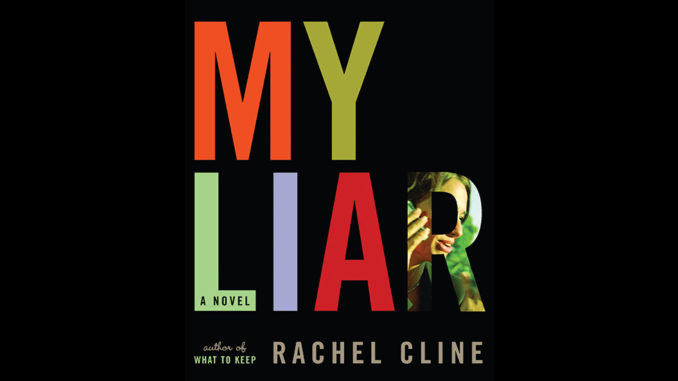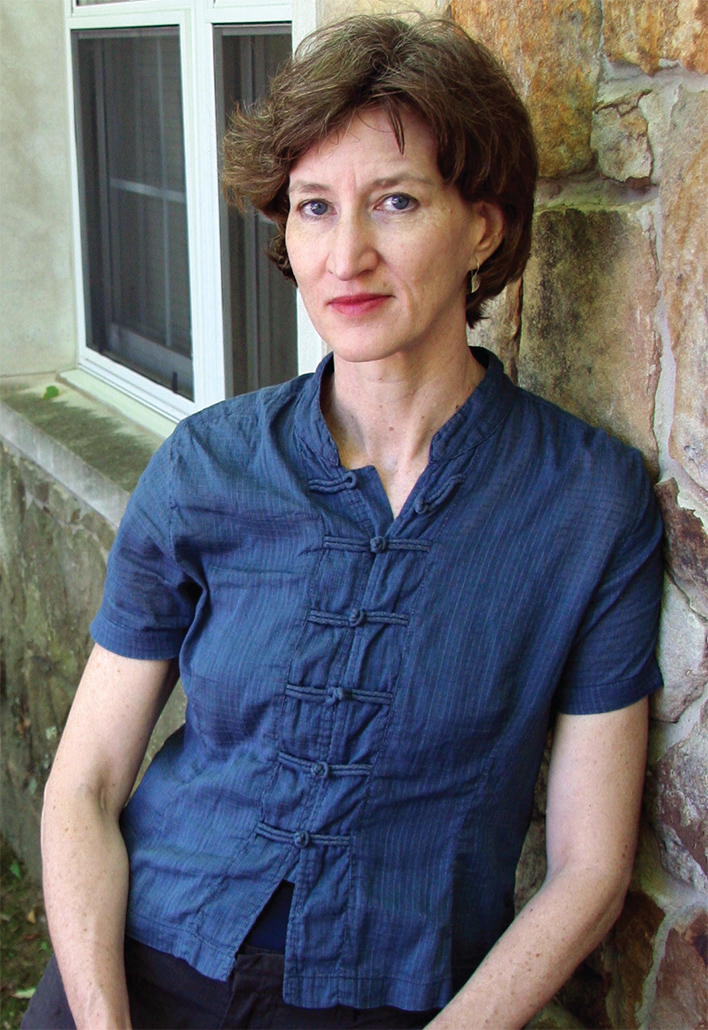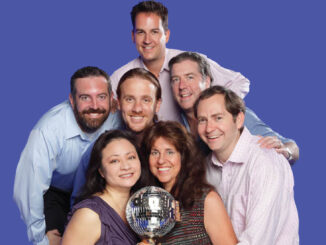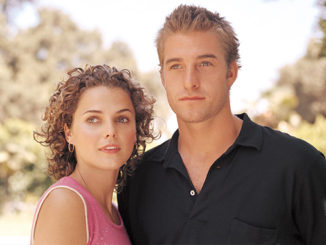
by Rachel Cline
I didn’t set out to write a novel about a film editor. I had lived in Los Angeles for almost ten years in the 1990s—trying to be a screenwriter, winding up in television, and then on unemployment—and I wanted to show people the version of Hollywood I had known, the one populated by film nerds who’d never owned an evening gown, or eaten dinner at the Palm, and who still felt awkward about the strange dance of competition and collaboration that “this town” required of us. I wrote the first draft of this book in 2002-03, and the main character was a screenwriter. It sucked.
Fortunately, around that time I realized that my book sucked, I happened to be at a Barnes & Noble where Walter Murch was about to give a talk. I had a boyfriend in college who was obsessed with THX 1138, and thus with Murch, so this actually meant something to me. Also, the book he was talking about, The Conversations, had been written by Michael Ondaatje, a novelist whose work I admire enormously. So I listened to Murch, bought the book and began reading it on the subway. I was somewhere under the East River when I had my Eureka moment. To wit: 1) The act of editing film is thinking made visible! 2) If I make my lead character, Annabeth, an editor, I could use text like film!
Annabeth was careful to assemble the scene in the Chinese lantern–bedecked courtyard according to Laura’s notes. It was a lot of material and very little dialogue, but she could tell that Laura had a very specific idea about how the scene worked and she did her best to reproduce it.
Okay, that second realization—not so much. I’m not skilled enough to pull it off, at any rate. But the first one was sufficient; by making this choice, I could show without telling. It’s painful to admit, but, despite all those years of writing scripts and even of teaching screenwriting, when I started writing prose, I had to learn the show-don’t-tell lesson all over again on every page.
Luckily, before my sojourn in Los Angeles, I’d actually worked for a New York line producer for several years, so I’d spent time in cutting rooms and even knew a few editors, specifically Barbara Tulliver. In 2003, Barbara let me spend a week watching her cut on the Avid—a machine that had played no part on the pictures we’d worked on together, back in the ‘80s.
Anyway, cut to the present. (Books take longer to write than feature films––much longer. You get paid less and we have no union, so cheer up!) My novel finally exists and is called My Liar. The excerpt that follows is from the middle of the novel. It is 1994, not long after the big Northridge earthquake. After meeting at a party and carrying on a sort of courtship for several months, Annabeth-the-editor and Laura-the-director (who started out as an editor) are working together on a picture called Trouble Doll. It’s really Annabeth’s first time cutting on her own—she’d been assisting the same guy for years––an avuncular Pole named Janusz––but he’s left the business. Anyway, this part of the story is about how working together starts to affect the relationship between the two women. The other important characters who appear are Simpson, the film’s producer, Deke, the cinematographer and David, Annabeth’s live-in boyfriend.

***
In matching canvas chairs, Laura and Simpson waited in the courtyard of the 1920s apartment complex where they were supposed to be shooting a party scene. The illusion of dappled, rosy light emanating from strings of Chinese paper lanterns was taking an eternity to perfect. Amid dozens of extras, and a crew whose numbers were swelled by supplemental grips, electricians and set decorators, both director and producer were doing their best to ignore the gathering sensation that their ship had run aground.
“This next bit’s just a single and an over, right?” said Simpson, looking at his watch.
“Well…,” said Laura, not yet ready to give up the empathetic effect she had hoped to achieve by following Bunny into the scene with a hand-held camera. Simpson was aware of this plan and he was not yet ready to ask directly for its sacrifice, but he wanted Laura to know it was on the table if they didn’t start shooting soon.
“Hey, how was the assembly last night?”
“Fine. Except my editor’s a passive-aggressive little c*nt.”
“Annabeth?” Simpson’s voice cracked with an incipient laugh. Laura’s head whipped around to check him.
“I’m serious. She decided she had to ‘fix’ the bit in the club from last week—before I’d even seen it in assembly.”
“Oh, stop. She worships the ground you walk on.”
“As long as she can walk in my footsteps…”
“Relax,” he said, as he watched the cinematographer give a promising nod to the first AD. “Do you want me to talk to her?”
Scene 11 was the hardest part of the movie for Annabeth. She worked on it for almost two solid days. It was a fight scene and she had never cut one before, and this made her insecure. But she did remember Janusz’s recipe: “A fight is just a conversation with fists,” and that was enough to get her started.
Laura shook her head and followed the slight shift in Simpson’s focus toward camera. The stand-ins were walking away, so she stood up. “But have you ever heard of that before? She even wrote new dialogue!”
“You never hear about anything an editor does that works, Laura. You know that.”
She nodded at Simpson but she was already forgetting about Annabeth as she walked back to the set, into the light, visualizing for the 50th time the material she was about to shoot. This was the scene that would take the curse off of Bunny, that would make her an actor in her own life instead of a victim of circumstance. The traveling shot of Bunny making her way into the party—the lights and shadows on her face, the sense of motion and direction—would show the audience who she really was, how cunning and subtle. “Looks great,” she told Deke, smiling. And, when Flynn came out of make up, the actress was so beautiful Laura wanted to kiss her.
Annabeth was careful to assemble the scene in the Chinese lantern– bedecked courtyard according to Laura’s notes. It was a lot of material and very little dialogue, but she could tell that Laura had a very specific idea about how the scene worked and she did her best to reproduce it. It started with a traveling shot of Bunny wandering into the crush of hipsters, reading the crowd and adjusting her appearance as she goes. Soon, she realizes that her bejeweled heels are too dressy, and she takes them off, proceeding barefoot toward the bar. Waiting for a drink, she begins to surreptitiously rub off her sparkly eye shadow, which is what she’s doing when she spots Jude (Steve Buscemi, doing a kind of Al Pacino-in-Scarface number in white pants and a Hawaiian shirt). Subtly adjusting her décolletage before lifting her drink and crossing to him, she gets jostled by a dreadlocked guy, but ignores him. She then sidles up to Buscemi, and taps him, which is when the audience finally gets what it wants: a close-up of Bunny looking bewildered, smeared and absolutely radiant.
When Annabeth had finally gotten the rest of the scene to work, it seemed painfully obvious to her that Deke’s Dutch angles made the moment seem more humorous than painful. And the sequence came early enough in the picture that this unintended humor could skew the whole tone of the movie. When she cracked it, she felt like a genius.
But the volley of dialogue that came next—which had been filmed very late in the evening after long hours lighting and shooting the traveling shots—wasn’t nearly as well executed. It seemed to veer directly from superficial flirtation into utter melodrama no matter how Annabeth put it together. The problem was not either actor’s performance, or even the move away from the subjective camera style at the top of the scene, it was the dialogue itself, which seemed to undercut Bunny’s intelligence. She’d gotten herself this far—invited to the party—and she’d made contact with the guy who invited her. She should have stood pat and waited for his next move. Instead, she turned into a dope, lowering her eyelids, confessing her dreams. “All I want is a chance,” was the line that made Annabeth cringe. It wasn’t even specific enough to be a real wish, just an open invitation to abuse—it was almost as though she was going to burst into song. The audience should feel that Bunny’s sad end is inevitable, but not that she deserves it.
And so Annabeth had gotten bogged down in the details, again, and that was when Laura, again, showed up unexpectedly. She opened the cutting room door without knocking, took one look at the Avid and practically bounded up to Annabeth’s side. “Oh boy, scene 17! Show me, show me!” she said, pulling up a nearby chair.
“It looks gorgeous,” Annabeth said. She stopped herself from commenting on the dialogue, chastened after her experience with the insert shot in the strip club. Instead, she just ran the scene for Laura and stopped it after the fateful line.
She started with a staccato series of back-and-forth cuts that got faster as the argument between Bunny and Trip escalated.
“What’s the problem?” said Laura.
“Well, it’s like she’s basically stripped off her clothes, hopped onto the sacrificial altar, and handed him the blade to cut out her heart with. It makes her a total victim,” said Annabeth.
Laura nodded, as if to say “So?” Then raised her eyebrows and said, “Let’s see the end.”
Annabeth ran the tail of the scene for Laura, who snickered appreciatively at Buscemi’s improvised alternative to That’s right: “Hey, I’m hip,” he’d said.
“So, you think it’s too soon in the story for her to be so…available?”
“Uh huh,” said Annabeth, cautiously.
“Well, what if you bring up that bit with the Rastafarian spilling his drink? You know, step on her line with that business. Make it less of a walk-walk-walk, stop, talk-talk-talk.”
It was an excellent suggestion and a total mystery to Annabeth why she hadn’t thought of it, herself. She made a few quick edits and they watched the result.
“Yeah, like that!” said Laura. “I still have some cutting-room chops.”
But something still wasn’t right. The punch still lacked impact. Frustrated, she lopped off the last shot entirely.
“Thank God one of us does,” said Annabeth.
Laura gave her an oh, please look and said, affectlessly, “Teamwork, n’est-ce pas?”
Annabeth nodded.
“I’m going to get fired, I know it,” she told David when he came in, at about four the next morning.
“Really?” he said, which was the wrong answer. He was supposed to reassure her. He could see on her face, even in the dark, that he had already fucked up. “Look, I don’t know enough about the movie business to second guess you. Whatever you tell me, I believe. So tell me what happened.”
“I just keep getting myself into these things with Laura; she thinks I’m not on her side.”
“How could she think that?”
Annabeth was silent, replaying the afternoon’s conversation in her head. Why couldn’t he just take her word for it and comfort her? Why did she have to explain? “Never mind,” she said, finally.
“It’s only her second feature, right? I bet she’s worried about what she’s doing wrong. She probably thinks you’re catching all her little mistakes and feels defensive.” This was an excellent point, he thought, but Annabeth wasn’t having it.
“She was working in cutting rooms while I was still an English major, David! I told you.”
She had told him. But what could he say now? “Do you even actually like her?”
“What?”
And so Annabeth had gotten bogged down in the details, again.
“You say she’s your friend, but you never say anything nice about her. I mean, maybe you aren’t on her side, really.” It gave him a strange satisfaction to say this, although he knew it would enrage her.
Annabeth was speechless. After a few moments of stunned silence, she turned away, curling up into a ball. He felt his heart shrink.
Scene 11 was the hardest part of the movie for Annabeth. She worked on it for almost two solid days. It was a fight scene and she had never cut one before, and this made her insecure. But she did remember Janusz’s recipe: “A fight is just a conversation with fists,” and that was enough to get her started.
The fight in Scene 11 was supposed to gradually build to the moment when Trip punched Bunny in the face. The most difficult part was to cut it so the audience would believe the actor’s timid shove was a real slam, because Bunny was going to have a black eye in scenes 12 and 13. Unfortunately, at the end of a long night of hard work in close quarters, Laura had let Deke talk her into shooting Trip’s final punch only from angles beside and underneath Bunny’s head.
When Annabeth had finally gotten the rest of the scene to work, it seemed painfully obvious to her that Deke’s Dutch angles made the moment seem more humorous than painful. And the sequence came early enough in the picture that this unintended humor could skew the whole tone of the movie. When she cracked it, she felt like a genius.
The act of editing film is thinking made visible!
She started with a staccato series of back-and-forth cuts that got faster as the argument between Bunny and Trip escalated. Then, just before Trip’s shoulder moved, she went into a close-up of his face for an extra beat. She stole this close-up from a completely different scene in which the actor playing Trip had flubbed his line, but she found she could use the slack expression on his face to supply the vicious subtext for the punch. She knew that, because of what had come before, the viewers would project the build-up of rage that the scene needed. Even though what he was really thinking was something more like “Uh, what was that line, again?”
But something still wasn’t right. The punch still lacked impact. Frustrated, she lopped off the last shot entirely, so that the scene ended just after Trip’s shoulder flinched. She told herself she would watch it again the next morning, when fresh eyes might suggest what should come next but then she ran it one more time and saw something else. The absence of a final blow was, in itself, a solution. It left an unanswered question hanging over the rest of the movie, a subconscious desire to see that last punch land. And that uneasy suspense would make Bunny’s violent death feel like a relief as well as an affront, when it finally came. “Always, if possible, make two emotions at once,” Janusz had taught her and at last she had done it.
Laura seemed to get it when she showed it to her, but all she said was, “Nice work. I think we still need a meatier sound effect for that first one, though.”
My Liar will be published by Random House and available in stores February 19, 2008. This excerpt was reprinted with permission of Rachel Cline.
Rachel Cline is a novelist living in Brooklyn, New York.





